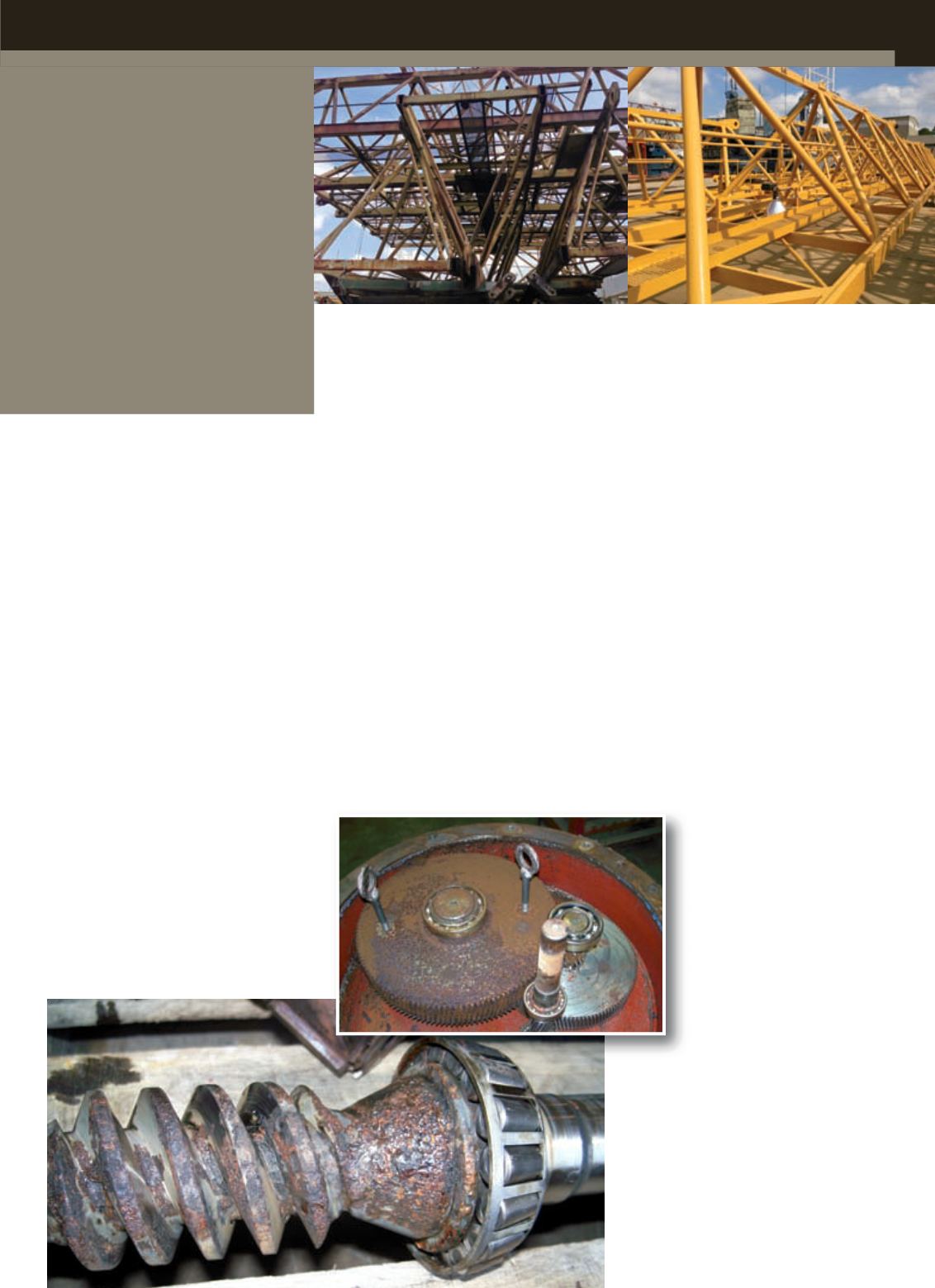
33
AUGUST 2013
ACT
INSPECTIONS
INDUSTRY FOCUS
Up and
running
Peter Juhren
explains that
resurrecting a tower crane
that has been mothballed
requires a strategic
inspection process and
due diligence.
in compliance with the manufacturer’s
instructions, as well as state and federal
regulations. In many cases this can
amount to 50 percent or more of the
anticipated rental income for the first job
after refurbishing.
It’s not a matter of simply changing some
oils and making sure the crane runs. To
properly complete a thorough refurbishing
requires a tear-down of all drives,
inspection of the entire steel structure
and replacement of many key electrical
components, such as motor refurbishing.
Complete assessment
First course of action is to assess the crane
completely. Moving the crane to an open
staging and inspection area makes the task
easier and more complete.
Having a dedicated and written Quality
Control/Quality Assurance program is
important to ensure the evaluation meets
the requirements your company has
dictated to achieve the level of quality
expected. For the first evaluation, assess
the complete steel structure, looking for
previous damage or damage that may have
occurred during storage and
handling. If the structure has
severe corrosion, NDT testing of
suspected areas may be required.
An engineer with expertise in
this area should be consulted.
It is strongly suggested that
all structural hardware is
NDT tested. At Morrow, we
inspect and NDT test all of our
structural bolts on a rotating
cycle.
Test the electrical motors. If
the crane was stored outside, at
a minimum the motors should be dipped
and baked to ensure the insulation has
not deteriorated causing premature failure
once the crane has been put back into
service. Key here is to use a quality motor
shop that understands how your motors
are wound.
Inspection, repairs and a new paint
job can give a mothballed tower
crane many hours of safe service.
T
he tower crane industry is finally
starting to gain traction after
four years of the worst down
market in history. Fleet utilization is
steadily climbing after dropping below 25
percent, and backlogs for most companies
continue to grow.
Tower crane sales are still very soft
as the market continues to absorb the
excess inventories still present with most
crane owners. The failures of some larger
companies also added to excess inventory
issues between 2008 and 2011. Rental rates
for tower cranes have slowly risen, but still
remain depressed. The outlook for the
second half of 2013 into 2014 is predicted
to see a continual increase in monthly
revenue.
As the utilization of tower cranes
continues to grow, rental fleet and
individual owners face another pressing
issue – how to restore their fleets after so
many cranes sat idled and stored.
Resurrecting a tower crane that has
been mothballed requires large sums of
money, time and due diligence to restore
the crane to its original condition and stay
Don’t simply fix things. Develop a step-by-
step inspection plan to ensure compliance.
Done properly, a refurbished crane can
perform as good as a new one.


